E-Archive
Interview
in Vol. 17 - March Issue - Year 2016
Customer Driven Innovation for a Global Residual Stress Market
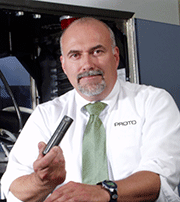
Michael Brauss, President of Proto Mfg.
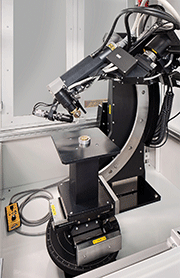
LXRD Microarea has a secondary chi rotation stage that enables measurement in side inclination
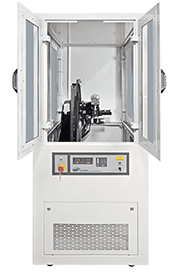
LXRD Microarea was developed to be a full-featured research grade instrument for RS measurement
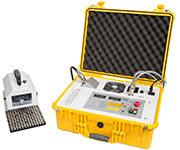
The ultraportable mXRD brings a new level of versatility in the field
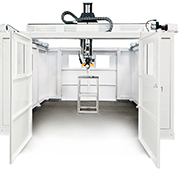
LXRD GANTRY simplifies measurement of large heavy components by moving the goniometer instead of the sample
We have interviewed Michael Brauss - President of Proto Mfg., one of the world's largest residual stress measurement companies, on several occasions over the last fourteen years. We had the opportunity to meet with him again and discuss what is currently happening in the residual stress measurement world.
(?) MFN: Since the last interview 6 years ago, what has changed at Proto Manufacturing?
(!) M. B.: We have continued to grow at a steady pace and have established a strong international presence. Our new international offices, labs and service centers in China, Poland, Japan, and India, are helping to address an increase in residual stress measurement needs, both for international customers and to support our domestic customers that now have overseas facilities.
(?) MFN: So are you finding the demand for residual stress measurements is predominantly international?
(!) M. B.: Actually no, the domestic demand is also quite strong as engineers and designers are now specifying residual stress parameters into engineering drawings. As a result, we have invested in our US Headquarters significantly. Our US office is now an 18,000 sq. ft. facility and home of our state-of-the-art measurement services laboratory, equipped with over 14 x-ray diffraction measurement systems.
(?) MFN: What drives the need for that many instruments in your laboratory?
(!) M. B.: There are three main factors. First, we want to ensure that we can do measurements for our customers in a timely fashion. Second, we want to make sure we have the ideal configuration of instrument available for all the diverse types of projects that we work on. Third, our laboratory actively supports the manufacturing side of Proto, by prototyping new and novel instrumentation, that will eventually be available for sale to our customers that may require their own measurement system.
(?) MFN: Are there any interesting changes to your instruments in the last 6 years?
(!) M. B.: A lot has changed with our product line and the technology behind our measurement systems. With our customers' needs driving our innovation process, we've expanded both our available systems in our laboratories and our product line that we sell, to include systems that fill the need for a larger scope of projects. In particular, our patented LXRD Microarea system is really interesting as it has the ability to measure more complex geometries of parts, without sectioning the part to access the measurement locations.
(?) MFN: You talk about your customers' needs driving innovation. Can you explain how exactly the industry has changed and how you've adapted?
(!) M. B.: Industry is now applying specifications from residual stress right into the engineering drawing. As an example in shot peening, companies need more than just an Almen strip, to accurately determine the correct peening parameters. X-ray diffraction has certainly become one of the de-facto tools for this on metal components, and we have answered the needs of our customers by expanding our product line to include not just small portable instrumentation, like our mXRD system, but also large systems that can handle large components. Recently we have also been doing work trying to determine the residual stresses in non-metal materials, such as plastics. As the world of residual stress changes, we adapt and develop products through our R&D programs, which fulfill the need for diverse measurement systems.
(?) MFN: Why is it so important that Proto dedicate itself to research and development?
(!) M. B.: A strong research and development program has given us the edge to stay at the forefront of x-ray diffraction technology. This long-term dedication has resulted in numerous patents, innovations and advances in x-ray diffraction. Since 1985, Proto has obtained patents for our PSSD x-ray detector, portable RS mapping, modular goniometers, integrated x-ray tube water filters, and our dual axis goniometer. All of these innovations have contributed to our state-of-the-art product line of quality residual stress measurement systems.
(?) MFN: You talk about your R&D department. Can you tell us about a project that you are really excited about?
(!) M. B.: Of all our residual stress systems, I think I get most excited about our LXRD Microarea. We developed this system to be a full-featured research grade instrument for RS measurement. This system is unique to the rest of our product line because it has a secondary chi rotation stage that enables measurement in true side inclination. Because of this, measurements can be performed in both directions without ever having to move the part. The reason this is beneficial is that you can now perform measurements on parts with complex geometries with no angle restrictions.
(?) MFN: Are you seeing any ongoing challenges in the residual stress measurement industry?
(!) M. B.: One thing we have noticed is there are more companies now promoting products with limited residual stress knowledge. This is certainly a concern as every situation can be very unique for each customer's parts. Customers may not be getting all the information they really need to understand and accurately measure their products. There is a lot more to residual stress measurements than just the instrumentation. There is a huge back-story that goes on to fully understand the issue, the material being measured, how the process being applied will modify the material, and whether the material is even suited for x-ray diffraction measurements.
(?) MFN: What other changes do you see in the future at Proto?
(!) M. B.: Moving forward, I see Proto continuing to grow and develop residual stress measurement systems that fit the needs of the market. We continue to have a strong focus on research and development and will continue to contribute to advances in x-ray diffraction technology. Certainly, we will always try to remind ourselves every day, that everything we do is really about making sure our customers get the best service and instrumentation possible. We are certainly expanding into other X-ray Diffraction areas. Which is really interesting and exciting for our company.
MFN would like to thank Michael Brauss for this interview!
For Information:
Proto Manufacturing Inc.
12350 Universal Drive, Taylor, Michigan, USA
48180-4070
Tel. +1.734.946 0974
E-mail: info@protoxrd.com
www.protoxrd.com



























